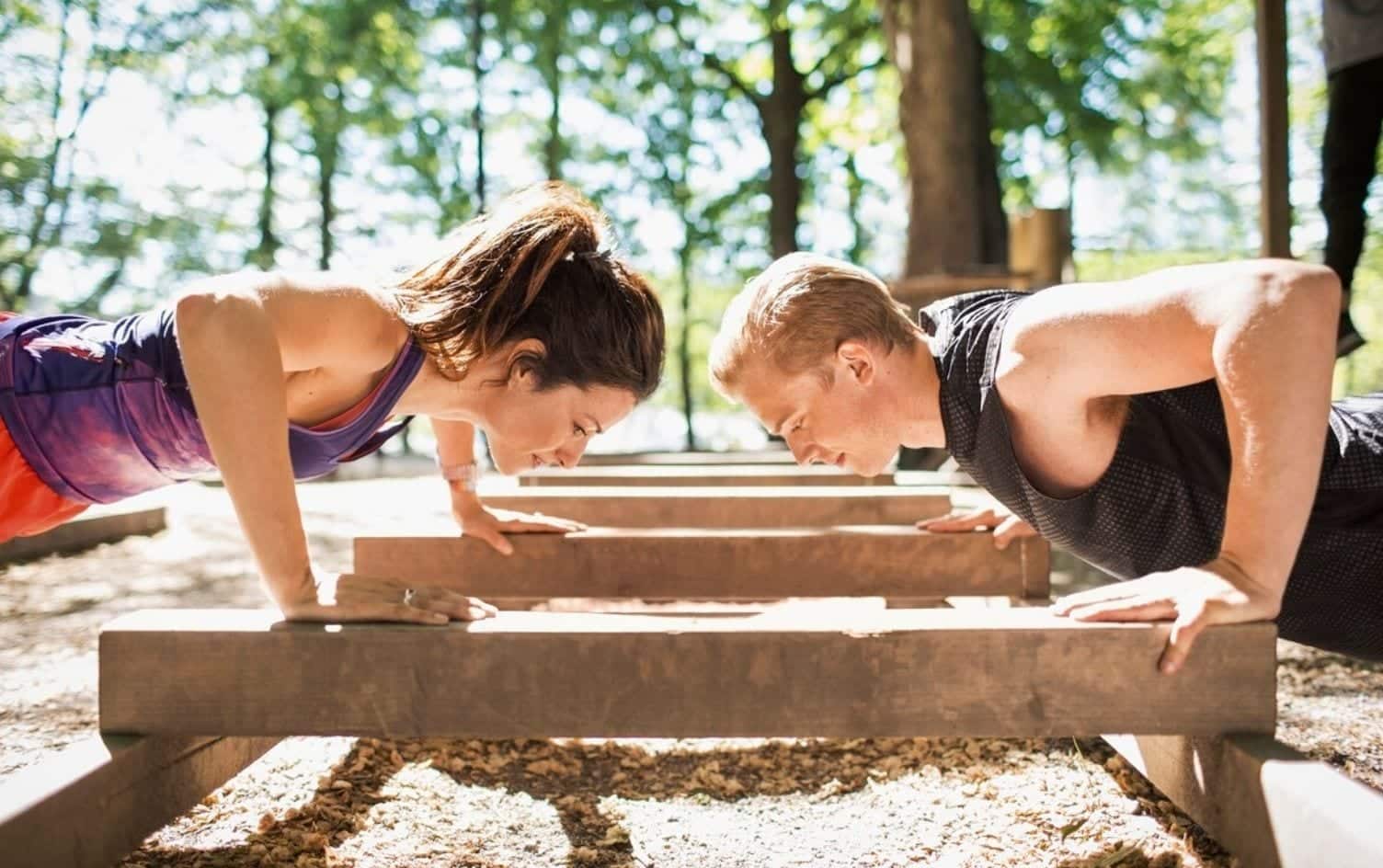Walking is a great total-body workout. But for those who specifically want better arm strength, it’s not always clear how to accomplish that during regular walking sessions. Take a cue from these trainers and you’ll have stronger arms to power your walks:
BRING A BAND
Resistance bands are handy anytime you don’t want to carry heavy equipment, especially on a walk. Most trainers recommend using a long resistance band (rather than a continuous loop) with handles for the most versatility. You can also stop, wrap the band around a tree or post and perform band rows and presses.
Here’s how to do a triceps exercise: “Wrap one end of a resistance band around your left hand and the other end around your right hand,” instructs Jamie Hickey, personal trainer and nutritionist. “Move the band over your head and behind your back. Relax your left arm. Lift your right arm all the way up and bend your elbow, putting your hand behind your right shoulder. This is your starting position. Lift your right arm straight into the air. Return to the starting position and complete 2–3 sets with 12–15 reps in each set. Switch arms to work your other side.”
CARRY LIGHT DUMBBELLS
Carrying light weights on a walk means you can incorporate exercises like bicep curls, overhead tricep presses, shoulder presses and shoulder lateral raises, says Meghan Kennihan, a personal trainer and running coach. Even when you’re not actively doing a specific exercise, just carrying some extra weight in your hands increases your upper body workload.
There are some precautions to take when using dumbbells, Hickey says. “Start with a 1-pound dumbbell in each hand. Swing your arms naturally and bend your elbows slightly, keeping your arms close to your body,” he advises. Avoid going very heavy or swinging your arms too high, as this repetitive stress can strain your joints and increase the risk of injury. Also, if you have existing joint problems or a cardiovascular condition, walking with weights isn’t a great idea, Hickey says.
DO BODYWEIGHT EXERCISES ON A BENCH
Depending on where you walk, there may be benches interspersed throughout your route. These are actually great tools for getting in a couple of arm exercises. “Every time you pass a bench, you can stop and do pushups, either on the backrest or seat rest,” notes Pam Sherman, a personal trainer. “To do a proper pushup, place your hands a bit wider than shoulder-width, keep your body in a straight line, and press down until your chest is close to the bench. Then, press back up.” Of course, if you can do pushups on the ground, go for it.
After that, do a set of tricep dips on the seat rest. To do a dip, sit on the bench and place your hands on the edge with palms down with your fingers facing toward your body. Scoot your lower body off the bench while keeping your backside close to the edge. “Lower your body down a few inches and then press back up,” says Sherman. “As you get stronger, you will be able to get your body lower.” Aim for 10–12 reps of each exercise per set, stopping at a minimum of three benches along your walking route.
WEAR WRIST WEIGHTS
It might feel old school, but wrist weights are very convenient since you can essentially put them on and then forget about them. Most wrist weights stay in place thanks to adjustable velcro. “There are comfortable wrist weights with thumb holes that make it easy to pump your arms while walking,” Kennihan explains. “The added weight helps strengthen your biceps if you keep your arms bent at 90-degree angles.” If you go this route, Kennihan recommends weights in the 2–5 pound range. Similar to using light dumbbells, make sure to take precautions before getting started (see number 2 above).
TRY ISOMETRIC EXERCISES
You can also perform isometric exercises while you walk. These involve holding a static position for a set period of time. Try this isometric arm workout made for walking from Steve Stonehouse, a certified personal trainer and director of education for STRIDE.
Isometric Arm Workout: Perform the following exercises as a circuit, with 10–15 reps per exercise, for a total of 3–5 rounds.
- Warmup: “To help improve flexibility and mobility (as well as help warm your arms and shoulders), use shrugs and forward/backward shoulder rolls,” Stonehouse says. After that, progress to big arm circles. “Keep your core tight but your neck, shoulders, arms and hands relaxed,” he advises.
- Hands-free row: Imagine the motion of a cable or band row. Reach your arms out in front of your body, then squeeze your shoulder blades together as you bend your elbows, bringing them in line with your waist. The “top” of the movement is when your elbows are bent to a max contraction and your arms are pulled back as far as they’ll go. Once you’re in that “top” position, pause and squeeze your back muscles and arms as hard as you can for 20 seconds per rep. Be careful not to shrug.
- Chest fly: Start with your hands in front of you, palms together at your heart center. Press your hands into each other as hard as you can for 20 seconds per rep.
- Bicep curls: Imagine the motion of a dumbbell bicep curl. The “top” of the movement is when your elbows are fully bent. Once in that position, squeeze your biceps as hard as you can for 20 seconds per rep.




